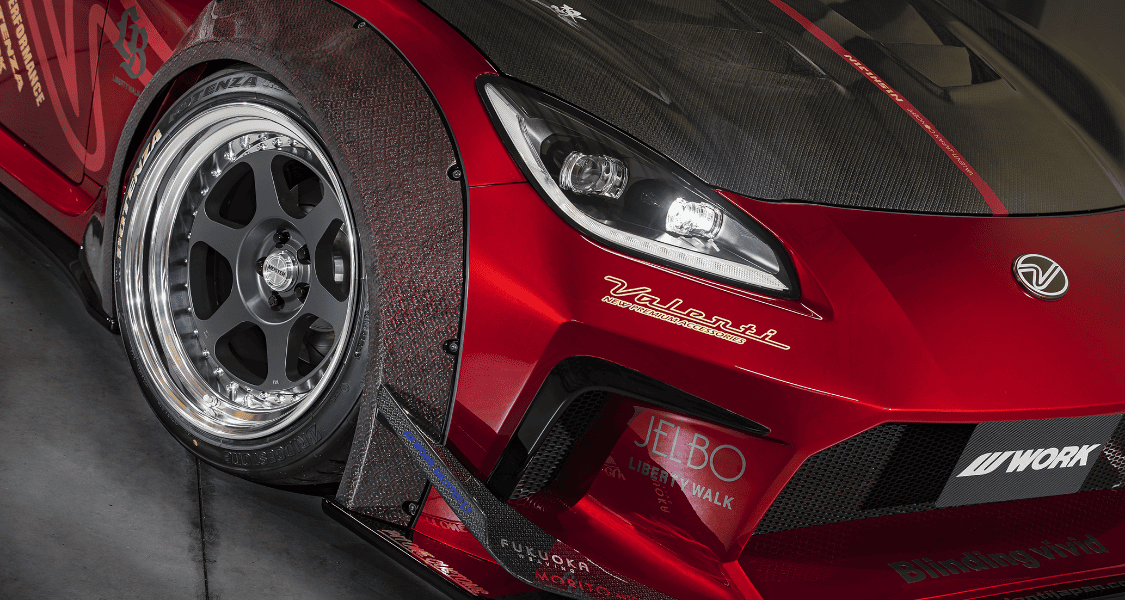
WORK TECHNOLOGY
テクノロジー
High-performance wheels, combining patented technology and expert craftsmanship
Work's technology and quality are supported by design development technology, numerous advanced patented technologies, and skilled craftsmen. Furthermore, Work supplies wheels to motor sports, collaborates with racing teams, and feeds back what has been forged into the product. Work's technical capabilities cannot be discussed without motor sports.

Design Development
At Work, wheel design and development is carried out by two teams: a dedicated design team and a design team. In particular, the design team is conscious of strength from the design stage. In this way, the development department, which is the heart of Work and combines advanced expertise and skills, inherits the founder's will, and when creating a design, we never forget to be excited and excited, and we are always conscious of whether we want to buy it, not what we want to sell.

Mold making
There are two types of WORK products: forged wheels and cast wheels.
Here, we will explain about cast wheels.
First, a mold is made based on the design created by the design development department. Since a mold needs to be made for each size, products with many size variations inevitably require many molds.

Casting
The aluminum alloy is heated to a temperature higher than the melting point in the completed mold, melted, poured into the mold, and cooled to harden into the desired shape.
Two types of casting methods, low pressure and gravity die casting, are used for the workpieces, depending on the type of product. The advantages of casting include high degree of freedom in design, the ability to produce precise and complex molding, high dimensional accuracy, high rigidity, and toughness.

Forging
At Work, we use the forging method for our flagship models, high-end models, and fully custom-made wheels such as the SION. Forging is a method of forming aluminum by compressing it. There are two main types of forging: die forging and cut forging. In the image, the forged solid aluminum is being cut out using a machining machine. It involves many steps and takes time, but it achieves the greatest advantage of achieving both strength and lightness.

Rim Generation
For 2-piece and 3-piece wheels, a rim is required to hold the disc in place. The rim is made from a single disk. First, the wheel is shaped like a pot, and the bottom of the pot is cut out. The rim is then formed using another machine. The most difficult part of rim manufacturing is making a rim with high roundness. This has caused many companies to give up on rim manufacturing. Work has obtained many patents for this manufacturing process. For more information, please see [Work's Patents].

Polishing, painting, and various processing
After casting or forging, the disc is polished and painted. Of course, the painting and polishing are done by hand by craftsmen. At Work, we offer not only standard colors, but also a variety of colors such as semi-order colors, colorism, asterism, and imperial gold for custom order plans. Of course, we guarantee the quality and functionality even when custom colors are used. *This applies only to painting at Work.

Assembly
The completed disc and rim are then assembled. In the work, the temporary assembly is done by hand, and the tightening to a certain torque is done by machine, making the assembly more reliable and safer. By assembling by hand, it also serves as a visual inspection. Then, inspection and brushing before welding are performed, and the disc and rim are temporarily assembled, welded, and the Pierce bolts are tightened. After that, sealing work is performed and the next process is started.

Inspection
After assembly, an inspection is carried out. There are at least seven or more items that are checked visually on the workpiece. In addition, mechanical inspection is also carried out. Various inspections are carried out, including runout inspection, appearance inspection, balance inspection, and functionality inspection. We have a system in place where several craftsmen carry out the inspections.

Various tests
At Work, we conduct various tests when developing wheels. Test standards are recommended by VIA, supervised by the Ministry of Economy, Trade and Industry, and JAWA, a member of the Japan Auto Parts Aftermarket Promotion Association (NAPAC), but Work has its own stricter test standards. In addition to rotational bending fatigue tests, radial load endurance tests, and impact tests, we also conduct our own tests (vertical impact tests, etc.). In addition, we also conduct surveillance tests (unannounced) from time to time to maintain quality.

Final inspection, packaging and shipping
After the above process, a final inspection is carried out before packaging and shipping.
At Work, invisible skills, labor, and thoughts that machines cannot achieve are packed into the product. We are particular about how to infuse trust into our products.